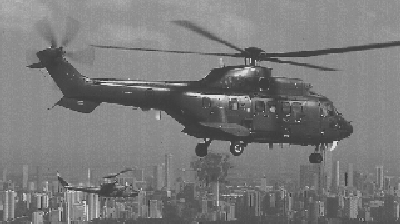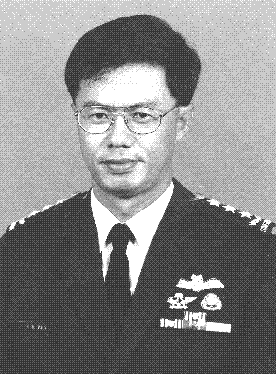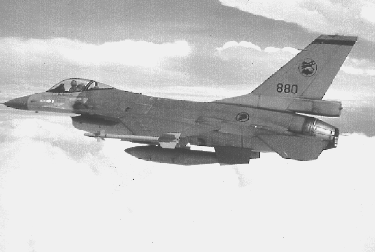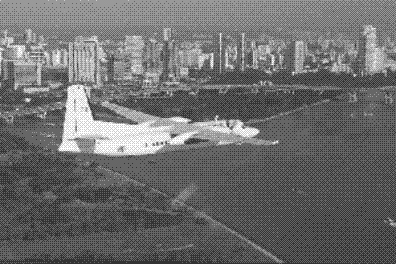
Paul Lewis/SINGAPORE
Fighter pilots have long jested that Singapore measures only four minutes by four minutes in terms of flying time. The island's diminutive size, however, belies its strategic importance. Situated at the tip of the Malaysian peninsular Singapore occupies an economic and geographic crossroads between the Eastern and Western hemispheres.
Singapore boasts an economically robust 3 million population, but possesses no natural resources and is wholly dependent on outside trade for its survival. The country annually sets aside a comparatively high 6% of its gross domestic product for defence, which, according to official estimates for the financial year 1997/8, translates into S$6.12 billion ($3.55 billion).
With little in the way of strategic depth to fall back upon, Singapore has compensated over the the past 30 years by investing in what is today arguably the most potent air arm in the region. "The mission of the Republic of Singapore Air Force [RSAF] remains largely unchanged and is unlikely to change - that is to deter in peacetime and, should that fail, to win a swift and decisive victory," says Singapore's Chief-of-Defence Force, Lt Gen Bey Soo Khiang.
AVAILABLE SQUADRONS
Tools at his disposal include six squadrons of upgraded Northrop F/RF-5E/Fs and re-engined McDonnell Douglas A/TA-4SU Skyhawks, totalling some 130 aircraft, along with a growing number of Lockheed Martin F-16s. They are supported by four Northrop Grumman E-2C Hawkeyes - South-East Asia's only operational force of airborne early warning aircraft. This is to be further augmented shortly with a quartet of Boeing KC-135R in flight refuelling tankers.
The service's front line fighter strength will be boosted in the coming months with the arrival of the first of 42 new Block 52 F-16C/Ds. With the need to release large numbers of pilots for transitional training to the new type, the RSAF will begin running down its fleet of around 80 General Electric F404-100 powered Skyhawks. "Our A-4s, even though they've been upgraded, are quite old airframes and we will have to replace them. The move to the F-16 is a move in that direction and so we will be slowly phasing out the A-4s," confirms Bey.
The future of Singapore's seven surviving Block 15 F-16A/Bs remains unclear, but with the market awash with surplus USAF aircraft, the prospects of finding a foreign buyer look slim. The ten year old fighters, in the meantime, are receiving the Falcon Up package of structural improvements, but as yet there is little interest in the more comprehensive avionics mid-life upgrade programme.
Delivery of new F-16s will afford a breathing space in which to begin looking for a replacement for its 49 F-5s and remaining A-4s. The F-5 fleet is midway through an avionics upgrade administered by Singapore Technologies Aerospace. This includes refitting the fighter with the Fiar Grifo F multi-mode pulse-Doppler radar, as well as new navigation and weapon systems.

FUTURE FIGHTER
The timetable for RSAF's next big fighter purchase is a matter of conjecture, with the weight of industry opinion leaning towards a contractual date of around 2001 and initial entry into service some four years after that. Although the official view is that the upgraded F-5S/Ts are still good for at least ten years of service, a preliminary market study is already under way.
RSAF pilots visited France to fly the Dassault Rafale, while the first detailed briefing on the rival Eurofighter EF2000 was scheduled to be made at the end of 1997. Other fighter types set to join the fray include the Boeing F-15E and F/A-18E/F, a proposed Block 60 development of the F-16 and the Sukhoi Su-27 series.
The selection process will not be limited to an exercise in comparative cost and performance analysis, but will encompass a wider array of logistical, industrial/technological and political considerations. The RSAF is now a three-horse force and it will have to decide between maintaining this or rationalising the number of fighter types. Singapore at the same time is conscious of over reliance on any one supplier.
"We really want to concentrate on one, two, or no more than three fighter weapon systems, that way we evolve over a period of time without being overly dependent on one platform," explains Bey. "Our dependence on a platform is not confined to just the kind of platform, but its origin. Should we be totally dependent on a US-based system or should we go into a French system as well?" he asks.
Balanced against the perceived commercial and planning benefits of a more diversified supplier base, there is the issue of Singapore's strategic relationship with Washington and interoperability with the US military system. The USAF rotates F-16 deployments though Singapore and has made available its bases in the USA for RSAF training.
Bey acknowledges: "The USA does provide us with a very cost effective weapon system, highly maintainable and reliable, as well as providing us training areas in the USA, which other platform suppliers cannot afford. When they also allow us to do that kind of package, then we'll be looking at that." Paris now appears to taking note, agreeing to open up training sites in France and to an exchange of pilots.
RSAF relations with the US foreign military sales system have not always been entirely smooth - the issue of F-16C/D software source codes caused one or two ripples in 1993/4. It does, however, enjoy privileges few other Asian air arms are afforded. While the Lockheed Martin F-22 is not yet for sale, the door is open to Singapore joining the Joint Strike Fighter (JSF) programme as an observer.
"I think that we would be interested in doing that, but the entrance fee is still quite big to us-so it's something to ponder on. From an operational view point, with the JSF being a possible replacement for the F-16s in the long-term, it is something we should be interested in," says Bey.
Near-term attention is focused on acquiring an attack helicopter, with an evaluation of the Boeing AH-64D Apache, Denel CSH-2 Rooivalk, Eurocopter Tiger and Mil Mi-28 Havoc continuing since 1997. Release of the Lockheed Martin Longbow millimetre-wave radar would give the US machine the edge, suggest observers. The requirement is believed to be for up to 30 helicopters (Flight International, 10-16 December 1997).
A final decision on the attack helicopter, which could come as early as the middle of this year, would then clear the way for efforts to be concentrated on finding a replacement for the RSAF's fleet of Bell UH-1H utility helicopters. The initial requirement is expected to be for some 12 aircraft, plus options, with the Bell 412, Eurocopter AS532 Cougar and Sikorsky S-70 Black Hawk all likely to be in the frame.
SUPER PUMA UPGRADE
The RSAF already operates 22 Eurocopter AS322 Super Pumas, which are being upgraded with a health and usage monitoring system, while a forward looking infra-red imager and improved glass cockpit are in the planning pipeline. They will be supplemented in the trooplift and search and rescue roles by 12 Boeing CH-47D Chinooks, the first six of which are in service in the USA and used for training.
Singapore is also expressing growing interest in naval helicopter operations and has been examining different types of deck handling systems, such as Canada's ASIST, to incorporate into the design of its next class of corvettes. This would appear to form part of a wider future move to enhance the RSAF's anti-submarine warfare (ASW) capability.
The RSAF in the past has conducted dipping sonar trials using a modified Super Puma, while its five Fokker 50 Maritime Enforcer Mk2 patrol aircraft offer scope for further development. "The navy would be interested in some form of airborne ASW capability, but this again depends on when we stage it, the type of platform, when we can have it, when we really need it, given that the submarine threats around this area are not too high at the moment," judges Bey.
Indonesia is the only South-East Asian nation with a submarine capability, and this is being further bolstered by the purchase of five surplus German Type 206 boats. Asia's economic slump has scuppered similar Malaysian and Thai plans to order submarines. Singapore, in the meantime, is acquiring four 30 year old decommissioned Sjoormen-class boats to "evolve and explore" underwater warfare. "Only when we bring one or two of these submarines back will we find out exactly what operating a submarine in this area is like. We've taken a evolutionary rather than revolutionary step to find out really what we need before we go and spend big bucks," cautions Bey.
The Fokker 50s, which are funded and operationally controlled by the navy, are now being fitted with the Boeing AGM-86 Harpoon anti-ship missile. Other air-to-surface weapons in the RSAF armoury include the Raytheon AGM-65 Maverick missile and GBU-12/Paveway II laser-guided bomb. At an official level, at least, there is no interest at present in adding heavier or longer-reach systems, such as the Lockheed Martin AGM-142 Popeye missile.
Bey is equally reticent on the subject of follow-on air to air missiles to replace the Raytheon AIM-7 Sparrow and AIM-9 Sidewinder weapons now in service. Singapore has denied reports that it is acquiring the Rafael Python-4 missile have been denied, while interest in the Raytheon AIM-120 AMRAAM is played down. "We're not quite actively knocking on the door at the moment," adds Bey.
The RSAF, aside from operating maritime patrol aircraft on behalf of the navy and providing the army with its rotary wing support, takes responsibility for the island's ground based air defences. Coverage from the top down consists of the Raytheon MIM-23 Improved Hawk, recently upgraded Matra-BAe Dynamics Rapier, Bofors RBS-70 and Matra-BAe Mistral surface to air missiles. A new addition is the Russian KBM Igla (SA-18), which the RSAF wants to integrate with a Mode 4 identification friend or foe system.

BASING ABROAD
The sight of Singaporean submariners sailing around the Baltic is representative of a growing RSAF trend to move its training offshore. The RSAF already maintains a training squadron of 12 F-16C/Ds on a 30 month lease from the USAF at Luke AB in Arizona. These will soon be replaced by a dozen new F-16s being leased from Lockheed Martin, which the RSAF has an option to purchase and are among the 42 Block 52s on order.
Elsewhere in the USA, the RSAF keeps six CH-47Ds at Grand Prairie, Texas, and plans to base two of its Boeing KC-135R tankers at McConnell AFB, Kansas. The Royal Australian Air Force's (RAAF) Pearce base, near Perth, has been home to Singapore's Flying Training School's 30 Agusta S211 basic jet trainers since 1993. More recently, it was agreed that a squadron of 12 Super Pumas would be moved to the Australian Army Aviation Corps' Oakey base in Queensland.
The RSAF had also been hoping to place 20 A/TA-4SUs at the RAAF's nearby Amberley base, but local concern over noise blocked this. An offer to make the more remote Woomera airfield in South Australia available appears to have been shelved for the time being in favour of a two year deployment to a French airbase near Bordeaux.
"We're always on the lookout for more overseas training," notes Bey. "Australia will still be an option open to us, but it will take some time to work itself out. In the meantime, the French have offered us a training base in France with a quick startup capability, so we will be going there with an A-4 squadron for a few years, while we work on Australia."
Other recent foreign basing agreements include conducting unmanned air vehicle training at Hoedspruit in South Africa and participation in training exercises at Canada's Cold Lake base in Alberta.
The RSAF eventually will need to find a solution to its lead-in fighter training mission, once its locally converted two seat TA-4SUs begin to near the ends of their lives.
"We will eventually be looking at a replacement, be it F-5s, a new platform or even buying flying hours from people like Canada's NATO flying training school, where you can go, bring your instructors and buy up airframe hours. These are possibilities in the long term that we should not rule out," suggests Bey.
The RSAF has undergone a rapid development in the 30 years since it was first established. The air force has achieved this despite constraints placed on it by the island's geographical confines and heavy reliance on conscripts and reservists to fill its ranks. The key to the RSAF's success now and in the future will be its continuing ability to keep abreast of new technology.

Source: Flight International























